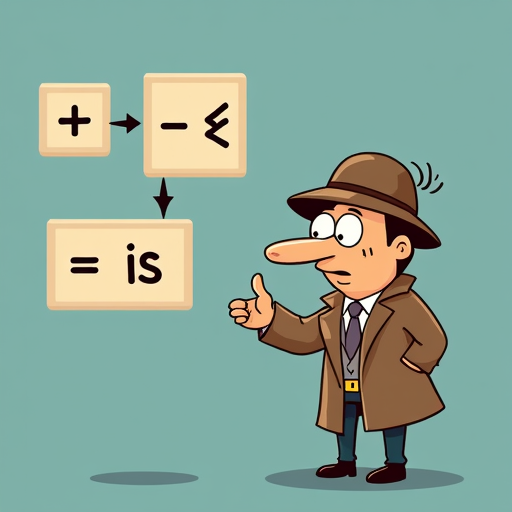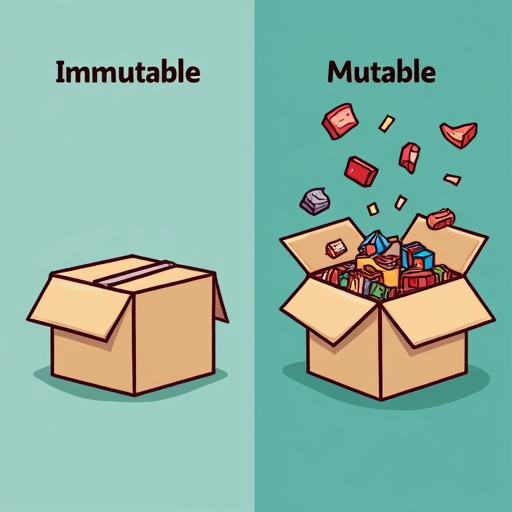Understanding Operators, Strings, and Mutable vs Immutable in Python — Explained with Memory Diagrams 🧠
 Mrityunjay Agarwal
Mrityunjay Agarwal
Understanding Operators, Strings & Mutable vs Immutable in Python — With Diagrams!
Python is famous for being “simple,” but under the hood? There’s a lot happening with how it handles data, especially when it comes to operators, strings, and object mutability.
Today, let’s decode these topics together — with practical examples and easy-to-visualize diagrams.

🔢 Operators in Python — The Building Blocks
Operators are the core tools for manipulating data. Here’s a quick snapshot:
| Type | Example | Purpose |
| Arithmetic | +, -, *, / | Basic math operations. |
| Comparison | ==, !=, >, < | Compare values. |
| Logical | and, or, not | Combine conditions. |
| Assignment | =, +=, -= | Assign/change values. |
| Bitwise | &, ` | , ^` |
| Membership | in, not in | Check for existence in sequences. |
| Identity | is, is not | Compare object memory addresses. |
Other Useful Operators in Python
| Operator | Description | Example | Result |
+ | Addition | 10 + 5 | 15 |
- | Subtraction | 10 - 5 | 5 |
* | Multiplication | 10 * 5 | 50 |
/ | Division | 10 / 5 | 2.0 |
% | Modulus | 10 % 3 | 1 |
** | Exponentiation | 2 ** 3 | 8 |
// | Floor Division | 10 // 3 | 3 |

Mutable vs Immutable Objects in Python
What Does Mutable Mean?
Mutable objects can be changed after creation.
Immutable objects cannot be changed after creation; any "modification" creates a new object.
Common Examples
| Type | Mutable? | Examples |
| String | ❌ Immutable | "hello", "123" |
| List | ✅ Mutable | [1, 2, 3] |
| Tuple | ❌ Immutable | (1, 2, 3) |
| Dictionary | ✅ Mutable | {"a": 1} |
| Set | ✅ Mutable | {1, 2, 3} |
| Integer | ❌ Immutable | 42 |
Immutable Example: Strings
When you modify a string, Python creates a new object in memory.
🧵 Deep Dive: The Difference Between is and ==
One of the most common beginner traps is mixing up is and ==.
They sound similar, but behave very differently!
| Operator | Purpose | Example | Result |
== | Checks if values are equal | "hello" == "hello" | ✅ True |
is | Checks if identity is same (memory) | "hello" is "hello" | ⚠️ True (sometimes) |
💡 Why is Can Be Tricky
a = "hello"
b = "hello"
print(a is b) # True (due to string interning)
x = 256
y = 256
print(x is y) # True (small integers are cached)
p = 257
q = 257
print(p is q) # False (new object for larger ints)
Memory Tip: Visualizing id()
id() gives you the actual memory address (unique identifier) for an object.
pythonCopyEdita = [1, 2, 3]
b = a
print(id(a)) # 139986175432800
print(id(b)) # 139986175432800
✅ Both a and b point to the same list in memory.
But if you reassign a:
pythonCopyEdita = [4, 5, 6]
print(id(a)) # New address
🔥 Pro Tip: Why Immutability is Powerful
Immutable objects:
Are hashable (can be used as dictionary keys).
Are thread-safe.
Help Python optimize memory (e.g., via interning).
For example:
pythonCopyEditmy_dict = {
("John", "Doe"): 123,
("Jane", "Smith"): 456
}
Tuples are immutable, so Python can safely use them as keys.
If you tried the same with a list, you'd hit an error:
pythonCopyEditmy_bad_dict = {
["John", "Doe"]: 123 # ❌ TypeError: unhashable type: 'list'
}
💡 Analogy: Mutable vs Immutable as People
Imagine two friends, Alice and Bob.
| Behavior | Mutable Example | Immutable Example |
| Change outfit | Alice wears new clothes daily | Bob tattooed his outfit on. |
| Memory reference | Same identity | Needs cloning for each change |
In Python terms:
Alice = mutable (
list,dict)Bob = immutable (
str,tuple)

💡 Strings & Operator Magic
Strings are immutable text sequences in Python. Once created, their content can’t be changed.
a = "Hello"
b = "Hello"
print(a == b) # True - Same values
print(a is b) # True or False - Same memory? Depends!
Subscribe to my newsletter
Read articles from Mrityunjay Agarwal directly inside your inbox. Subscribe to the newsletter, and don't miss out.
Written by
